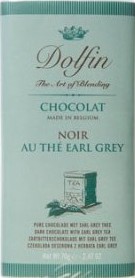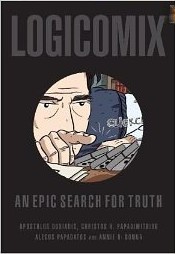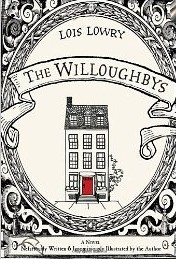 Links.
Links.
 Booker Prizes
Booker Prizes
 Chocolate.
Chocolate.
 Books read
Books read
 Best books read in 2010.
Best books read in 2010.
 Best writers of poetry and prose
Best writers of poetry and prose
My chocolate of choice for a NaNoWriMo attempt:



Books read recently by J. Zimmerman
Disclaimer.
 Links. Links.
 Booker Prizes Booker Prizes
 Chocolate. Chocolate.
 Books read Books read
 Best books read in 2010. Best books read in 2010.
 Best writers of poetry and prose Best writers of poetry and prose
|
My chocolate of choice for a NaNoWriMo attempt: 
|


|
|
Reader's Bill of Rights [after Daniel Pennac in Better than Life
from November 2003 Utne Magazine] includes the rights to:
|
|
"Our civil rights have no dependence on our religious opinions, any more than our opinions in physics or geometry."
[Jefferson's 1785 statute] |
{ March : sangatsu (see also books on learning Japanese) 2011 }
(3.31.2011)
(3.29.2011) (3.27.2011)The sequence of character introductions is non-standard and sensible. Proposes fewer and less forces mental images to aid memory than did the slightly ridiculous. Remembering the Hiragana (by James W. Heisig). Also has two helpful learning techniques. Recommended.
A lightweight novella (following Stormy Weather and preceding the longer and more interesting Sick Puppy), the Hiaasen romp includes a couple of not-so-bright backwoods militia types abusing women and stealing a lottery ticket before the usual Hiaasen wisdom-of-Solomon-type justice strikes.
Have enjoyed his:
 The Hidden Reality: Parallel Universes and the Deep Laws of the Cosmos (2011)
by Brian Greene.
The Hidden Reality: Parallel Universes and the Deep Laws of the Cosmos (2011)
by Brian Greene.
Greene, a theoretician and string-theory promoter, waltzes through the membrane between science and science fiction. While the curvature of space seems to be zero (as opposed to positive or negative), data have not yet shown space to be infinite rather than finite. Greene runs with the "infinite" space pack. Possibly because the results are more exotic. But in the end I was left with "so what?" Does this mean anything more to my life than an episode of StarTrek.
Though see also books on the science of StarTrek.
John Le Carré's read:
A fairly self-indulgent little book that interweaves half a dozen short stories into a cozy novel. Choppy plotting that seems to have significance and then fades away.
Cheerfully read by Robert Ian MacKenzie, so I kept listening while doing housechores and gardening, even though the plotting was weak and the character either hectoring or timid.
Does not match up to his series on
Senior Detective Mma Precious Ramotswe and
Assistant Detective Mma Makutsi.
Mma Ramotswe books read:
The Kalahari typing school for men. My favorite so far.
In the Company of Cheerful Ladies.
Morality for Beautiful Girls.
The No. 1 Ladies' Detective Agency
Tears of the Giraffe.
Other books by this author are relatively boring, particularly: At the Villa of Reduced Circumstances.
Very helpful exercises.
One of the best books read in 2011.
John Le Carré's read:
The haiku and tanka are of particular interest: a great variety of poets and material.
Among the many poets is Fujiwara no Teika (1162-1241), a great tanka poet, essayist, teacher, anthologizer, and one of the compilers of the Shinkoshinshū.
One of the best books read in 2011.
{ February : nigatsu (see also books on learning Japanese) 2011 }
Whoppingly complicated. This novel introduces Hercule Poirot, Inspector Japp (later promoted) and Lieutenant Hastings (later promoted). The narrator (Hastings) is very amusing, jumping to conclusions as vigorously as many a reader.
The sequence of character introductions is non-standard and has some attractions. But many of the mental images proposed to aid memory are too ridiculous.
Asserts that regulations rather than prices are needed to solve problems, particularly in reducing our use of oil and stabilizing the climate. Asserts [p. 170-1]:
| The problems caused by the mismatch between prices and values do not stem from a lack of skilled practitioners, but from the deep failure of the market to value our world properly. ... The increased mismanagement of the planet's resources is almost inevitable when profit-driven motives set the terms of a value. ... The answer to the market's valuing the world at naught is not a democracy run by experts, but the democratization of expertise and resources. |
Sections on:
This is unfortunate as the book includes interesting schematics of the elements of a thousand Japanese Kanji.
Virgil Flowers (protégé of Lucas Davenport) cleans up a small-town cult that has caused four deaths in two years. Not great literature, in comparison to the recently read and brilliant The Thousand Autumns of Jacob De Zoet. but still, a fast-moving and lively thriller. Virgil's data dumps at the local café are particularly helpful to solving the crimes.
In this recent book, Virgil is more interesting, more human, and more amusing, than in the previous Flowers book.
A history of World War II, with 474 numbered citations from documents of the times: official government transcripts, speeches, interviews, journals, and books. Starts with Alfred Nobel (the explosives manufacturer) in August 1892:
| On the day when two army corps may mutually annihilate each other in a second, probably all civilized nations will recoil with horror and disband their troops. |
Ends with Mihail Sebastian (a Jewish writer in Bucharest) on the last day of 1941:
| I carry inside myself the 364 terrible days of the dreadful year we are closing. But we are alive. We can still wait for something. There is still time; we still have some time left. |
Presents material from half a decade that includes showing ulterior motives of the leaders of Britain and the USA in wanting a war with Nazi Germany. Stark and dramatic.
Books by Baker:
 A Box of Matches (2003).
Innocent; slow and meditative.
A Box of Matches (2003).
Innocent; slow and meditative.


 The Anthologist (2009):
his brilliant hymn to poetry (well, formal poetry) and to procrastination. Read it and learn!
His best: how to procrastinate.
One of the best books read in 2010.
The Anthologist (2009):
his brilliant hymn to poetry (well, formal poetry) and to procrastination. Read it and learn!
His best: how to procrastinate.
One of the best books read in 2010.
 Human Smoke: The Beginnings of World War II, the End of Civilization: nonfiction (2008).
Stark and dramatic documentation of the words of contemporary reports in the half century leading up
to World War II.
Human Smoke: The Beginnings of World War II, the End of Civilization: nonfiction (2008).
Stark and dramatic documentation of the words of contemporary reports in the half century leading up
to World War II.
 The Size of Thoughts: Essays and Other Lumber (1996).
Essay written since 1982.
The Size of Thoughts: Essays and Other Lumber (1996).
Essay written since 1982.

 The Thousand Autumns of Jacob De Zoet (2010)
by David Mitchell; the recording was brilliantly narrated by Jonathan Aris with the assistance
of Paula Wilcox.
In a brilliant artistic move, Aris uses English class and regional accents to significant effect in
denoting power and position in many scenes involving only Japanese.
The Thousand Autumns of Jacob De Zoet (2010)
by David Mitchell; the recording was brilliantly narrated by Jonathan Aris with the assistance
of Paula Wilcox.
In a brilliant artistic move, Aris uses English class and regional accents to significant effect in
denoting power and position in many scenes involving only Japanese.
One of the best books read in 2011.
Long-list nominee for the 2010 Man Booker Prize.
Its blurb includes: "Drawing on some of history's most brilliant thinkers, from Plato to Shakespeare to Thoreau, he shows that digital connectedness serves us best when it's balanced by its opposite, disconnectedness."
A nice factoid on p. 212:
| A few winters ago, Condé Nast Traveler magazine sent three reporters to Moscow, one equipped with a BlackBerry, one with an iPhone, and one with just a hard-copy guidebook. They were given a series of tourist challenges to complete in the frigid metropolis, such as finding a great cheap restaurant and locating a pharmacy open at midnight. The low-tech contestant won. ... As any seasoned traveler will tell you, the kindness of strangers can be relied upon anywhere. |

|
Logicomix: An Epic Search for Truth (2009)
by Apostolos Doxiadis.
One of the best books read in 2011. |
What a struggle! Eliot's 7th novel, begun 1869, serialized 1871-72, and published as a novel in 1872. The multiple plots tumble around each other and to me the book seems to lose focus, possibly because the book comprises several different and initially independent stories being combined during three years of writing. That together with the superior tones and arch commentaries become rather trying — though the latter were possibly primary attractions to Virginia Woolf, a lavish praiser upon Middlemarch and an expert at superior tones.
A collection of essays from the brilliant and scavenging mind of NB. The opening essay (itself called "The Size of Thoughts") begins:
| Each thought has a size, and most are about three feet tall, with the level of complexity of a lawn mower engine, or a cigarette lighter, or those tubes of toothpaste that, by mingling several hidden pastes and gels, create a pleasantly striped product. Once in a while a thought may come up that seems, in its woolly, ranked composure, roughly the size of one's hall closet. But a really large thought, a thought in the presence of which whole urban centers would rise to their feet, and cry out with expressions of gratefulness and kinship; a thought with grandeur, and drenching, barrel-scorning cataracts, and detonations of fist-clenched hopes, and hundreds of cellos; a thought that can tear phone books in half, and rap on the iron nodes of experience until every blue girder rings; a thought that may one day pack everything noble and good in its briefcase, elbow past the curators of purposelessness, travel overnight toward Truth, and shake it by the indifferent marble shoulders until it finally whispers its cool assent — this is the size of thought worth thinking about. |
The essay proposes Baker's theorems of Large Thoughts:
And after testing the theorems it sauters jauntily toward a Bakerian conclusion of only partial modesty.
The final essay ("Lumber") ends:
| Lumber-room loans the short-sold world back to the reader, while storing all of poetry and prose within it as a shrouded pledge. It contains the notion of containment; it keeps in mind how little we can successfully keep in mind. ... Lumber becomes treasure only temporarily, through study, and then it lapses into lumber again. Books open, and then they close. |
Books by Baker:
 A Box of Matches (2003).
Innocent; slow and meditative.
A Box of Matches (2003).
Innocent; slow and meditative.


 The Anthologist (2009):
his brilliant hymn to poetry (well, formal poetry) and to procrastination. Read it and learn!
His best: how to procrastinate.
One of the best books read in 2010.
The Anthologist (2009):
his brilliant hymn to poetry (well, formal poetry) and to procrastination. Read it and learn!
His best: how to procrastinate.
One of the best books read in 2010.
 The Size of Thoughts: Essays and Other Lumber (1996).
Essay written since 1982.
The Size of Thoughts: Essays and Other Lumber (1996).
Essay written since 1982.
Good in parts, this novel meditates on what it is to be Jewish:
|
Before he met Finkler, Treslove had never met a Jew.
Not knowingly at least.
...
Finkler was almost orange in colour and spilled out of his clothes.
...
If this was what all Jews looked like, Treslove though, then Finkler, which
sounded like Sprinkler, was a better name for them than Jew.
So that was what he called them privately — Finklers.
He would have liked to tell his friend this. It took away the stigma, he thought. The minute you talked about the Finkler Question or the Finklerish Conspiracy, you sucked out all the toxins. But he was never quite able to get around to explaining this to Finkler himself. [p. 17] |
Finished Lesson Two.
Finished Lesson One.
268 pages of 38 chapters plus an epilog. In addition, in tiny type: 64 pages of notes, 19 pages of references, and 17 double-column pages of index.
This book is "perhaps a little Ancient Marinerian" (as Baker himself says on his p.viii — oh, did I mention there is also an Introduction? — in describing a like-minded button-holing man).
Baker's mantra is "leave the books alone" (p.134). His own book, Double Fold, is an erudite and fact-rich rant that our libraries are losing information by failing to keep original media of newspapers and books and failing to keep sufficiently high resolution reproductions of discarded paper-based media.
Baker's commonsense surfaces well on p. 159 where he creates and advocates his "Turn Endurance Test" as a new and non-destructive test to replace the library's current destructive "Fold Endurance Test", which Baker's wife deplores (when he practices it on their own collection) and which Baker debunks.
Given Baker's attention to detail, I feel a shadenfreude tickle at noticing errors; e.g. the Note on the Wei T'o process is p.306 (not p.305 as in Baker's Index).
Books by Baker:
Despite being a 2010 National Book Award winner and being lively it's not as enthralling as Lois Lowry's The Willoughbys.
But this completes my first pass though this very helpful grammar.
{ January : ichigatsu (see also books on learning Japanese) 2011 }
(1.31.2011)
A helpful book on teaching five levels of emotional understanding, particularly related to mind-blindness, as the author believes that children with autism can be successfully taught to interpret mental states. In that way they can reduce their mind-blindness, which can lead to:
A valuable book. Sad that it is marred by key errors in examples (a name of a child, a gender of a child, a name of an image). Be sure to correct the examples in your copy before using them on a child.
Although written eight years ago, it's a WikiLeaks kind of tale. The plot almost holds together; mostly just suspend your disbelief and ride this one fast.
A bleak tale of dystopia, this continues her previous The Giver (1993) book, but unfortunately diluting its vision.
By Lowry:
A fascinating adventure to read this book, averaging one of its 108 sections per day for the last 3 months, and writing haiku in response throughout this period.
Donegan's lineage dates back to the great Masaoka Shiki. Donegan studied in Japan under Seishi Yamaguchi (1901-1994; Donegan p.101-102):
| summer grasses — the wheels of a locomotive come up to a stop |
who studied under Takahama Kiyoshi (1874-1959; Donegan p. 99-100):
| he says a word I say a word: autumn deepens |
who was one of the main students of Masaoka Shiki (1867-1902; Donegan p. 59-60):
| disgusting — people arguing over the price of orchids |
One of the best books read in 2011.

|
The Willoughbys (2008)
by Lois Lowry.
Delighful: a "tongue-in-cheek take on classic themes in children's literature, the four Willoughby children
set about to become 'deserving orphans' after their neglectful parents embark on a treacherous around-the-world
adventure, leaving them in the care of an odious nanny." [book blurb]
|
By Lowry:
Delightful and adventurous story of the minerals and plants and animals that we have used over the millennia to put color on our walls, clothes, bodies, and art. My favorite chapter, "Blue", includes Finlay's adventurous trips to Afghanistan in search of the motherlode of Ultramarine. And I like both her plethora of facts and her amusement of the nerdiness factor of such fact wielding:
| "To my delight I could now tell immediately, by color alone and from a distance, when a Ming vase was fired. The possibilities for pretentious expertise were endless." [p. 207] |
Very helpful exercises.
Very helpful exercises.
Lots of helpful examples in this fast-paced book. I'm moving ahead even though I have not quite completed my Lesson 1 assignment (46 basic hiragana symbols plus variants).
Related pages:
 Books on Buddhism.
Books on Buddhism.
 Books on Learning Spanish.
Books on Learning Spanish.
 Poetry - Learn How to Write Your Own.
Poetry - Learn How to Write Your Own.
 Forests of California and Trees of the World.
Forests of California and Trees of the World.
|
|
Check our disclaimer.
Copyright © 2011-2016 by J. Zimmerman. |